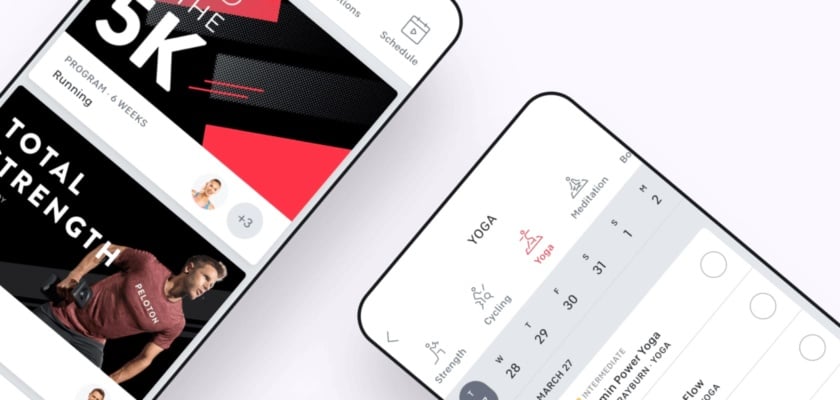No Bike, No Problem: We Review Peloton’s Workout App

In this three-part Peloton series, I’ll break down everything about the Peloton app from the onboarding experience, user retention, and monetization along with recommendations on how I think they can improve the user experience through experimentation.
Peloton has taken the fitness industry by storm. They have been featured in the New York Times, Forbes, and CNBC along with several other news and media outlets. They have grown a massive following of loyal users with over 30,000 ratings on the App Store and they currently rank as #29 in the App Store’s Health & Fitness category.
Fitness is a huge part of my life. Prior to COVID, I went to spin class twice a week and even considered buying a Peloton bike to continue my spin classes at home (unfortunately, my Toronto condo doesn’t have enough space for a bike). As an alternative, I’ve been following fitness YouTubers and using their workout videos to stay in shape. When I heard that Peloton was starting a 2-month free trial of workouts that didn’t require the bike, I knew I had to give it a try.
Key Takeaways
- Peloton created a great onboarding experience that addresses market trends in the user acquisition funnel:
- Clear value propositions
- Contextual push notification prompt
- Fast time-to-value for the user
- There are many optimization opportunities that can be tested without engineering resources or requiring any additional App Store releases
- Optimize your app while minimizing the lines of code for your dev team with the Taplytics Mobile Visual Editor
App Overview
The Peloton app has a wide variety of workouts broken down into categories such as strength, yoga, cardio, and meditation. The app has both live and recorded workouts which are just as high energy with enthusiastic instructors who guide you through the videos. During the live workouts, the instructor can interact with people who joined the live class and they give participants callouts like wishing someone a happy birthday or congratulating them on completing Peloton fitness achievements which are goals on the app to track your progress.
Why We Love It
The app provides live workout classes and appeals to a wider audience of users who may not have a Peloton bike. Users have access to a 2-month free trial which then becomes $12.99/ month which can be paused or cancelled at any time. I loved my initial experience with the app since there are challenges and goals to keep you motivated and all your workout statistics are tracked in the app. This includes everything from a calendar view showcasing how many days you worked out, what time of workouts you completed and the ability to filter workouts on factors such as difficulty, length and body part. My favourite part of the app is that each video tells you how many calories you’ll burn which was an important factor for me and is a feature I didn’t get with my YouTube workouts.

The Onboarding Experience
Onboarding is one of the most important stages in the mobile user journey; it’s the front door to a customer’s experience with a brand. With so many options in the marketplace, user interest is so easily lost that, on average, apps lose over 80% of new users after their first session. As a result, CAC spikes and growth stalls. Top brands optimize their mobile onboarding experiences to drive LTV and user retention.
Peloton had an effective onboarding experience. I set up my Peloton account on both my Roku TV and my Iphone and as soon as I downloaded the app, there was a clear value proposition highlighting their world-class instructors that are available to you at any time. After logging in there was the option to connect to your Apple Health App to sync your workouts followed by a contextual push notification prompt. By leading with context, Peloton removed any inherent friction that comes with a user’s first interaction with a new product.
Experiment recommendation: Test the value proposition copy, image, as well as the CTA to optimize user acquisition. These are simple, powerful, no-code experiments that can be set up through the Taplytics Mobile Visual Editor to help push users through the onboarding funnel.
A pivotal step in onboarding is getting permission from users to receive push notifications. Because push notifications are inherently onerous on users, apps will have a higher push opt-in rate when they understand exactly why they should opt-in. The ability to send push notifications helps top brands personalize their communication with mobile users at a 1:1 level to drive app engagement and improve retention. Designing an experience that clearly indicates the value of opting into push notifications is key to unlocking the ability to engage with your users. Peloton’s push prompt contextually appears upon moving to the next step of the onboarding flow. They give users value in accepting push notification by offering personalized progress updates and notifications on new features and content.
Experiment recommendation: test the copy within the modal with various value propositions or even testing when the modal appears in the user journey. The benefit of doing this test is that Peloton could see if changing the order or the modals or when they appear in the onboarding process would lead to a higher acceptance rate for users to receive push notifications.
Another important factor in the onboarding process is time to value. While time to onboard varies depending on the nature of the app, it’s important for the amount of time to onboard to be worth it to the user. Like most fitness apps, Peloton’s app has the advantage of being intuitive and they can afford to have the user enter the app with little to no instruction.
Normally, I would use Fitbit and Strava to track my fitness journey. Strava is an app which only tracks running and cycling. It shows you the route you took, how long your workout was and easily allows you to share your workout statistics with others. Strava is focused on running and cycling whereas Peloton includes all types of workouts. I find that Fitbit works best for tracking overall health. You can track almost anything health related on the app from your water intake, calorie counting, sleep schedule and you can get detailed information on your heart rate, calories burned and distance walked or ran. My favourite thing about Fitbit is that you can track your calorie intake and output based on logging what you ate and your physical activity for each day. The con about Fitbit is that it only tracks your health and doesn’t provide workout videos. It can also be tedious and difficult to track your workouts if you don’t have a Fitbit and are manually inputting your workouts.

Both Strava and Fitbit are great apps for people who already have a fitness plan and simply want to track their progress whereas Peloton’s app provides workouts for people at any point in their fitness journey. This is ideal for people looking to start working out and are seeking guidance on where to start. Personally, I found that my workout routine was getting repetitive since I was following the same YouTubers videos and I wanted to try something new.

What’s great about Peloton is It only took me a couple of minutes to get my account set up. The process was fast and easy to navigate which allowed me to get started on my first workout immediately.
Starting My First Workout
Once I was done with the onboarding process I was brought to their main page which organized classes into different categories. Before getting started I also looked into the “featured” page which showed live and upcoming workouts as well as featured series. On the challenges page, I could see group challenges to join.
The first workout I completed was a 20-minute glutes and legs strength workout with a 7.4/10 difficulty rating. The instructor was incredibly motivating, and the workout was a lot of fun to complete. What I liked about the workout class was that the instructor explained how to position yourself to have good form during each exercise. She also talked about which muscles each exercise targeting and stopped to encourage people to take water breaks. I felt energized after the workout, I woke up feeling sore which is always a sign of a great workout! In comparison, YouTubers tend to simply do the workouts and they rarely explain how to best position yourself, or give reminders to take water breaks which is extremely important! The Peloton instructors are clearly fitness professionals who not only show you how to workout, but explain the physical and mental benefits of the exercise throughout the class. Peloton had a wonderful onboarding experience and was easy to follow as a new user. After completing the workout, I was given a prompt to rate the workouts difficulty level as well as give it a thumbs up or down.
Conclusion
Once you complete a class, you can go back to your profile tab where you can see a calendar view highlighting the days you have completed a class. It also adds the workout you just completed to your “workouts” list which shows your workout history. In your profile, you can also see statistics on what type of workouts you completed (i.e. strength, stretching, yoga) along with your achievements.
Overall, I really enjoyed the onboarding experience. The process from logging in, to finding a video only took a few minutes to complete. I also found the platform intuitive to use. They had a wide range of videos and even after applying several filters on the type of exercise I wanted to complete there were several options to choose from. This allowed me to find an exercise suited for what I was looking for while having enough content for me to come back to for my next workout.
In Part 2, we’ll dive into how Peloton’s app aims to retain users and I’ll share my personal experience on why I kept using the app. For more Peloton content, check out our Peloton app review on TikTok!
__
For more information about Taplytics and how we help companies optimize their apps and websites, feel free to reach out – we’d love to chat!
